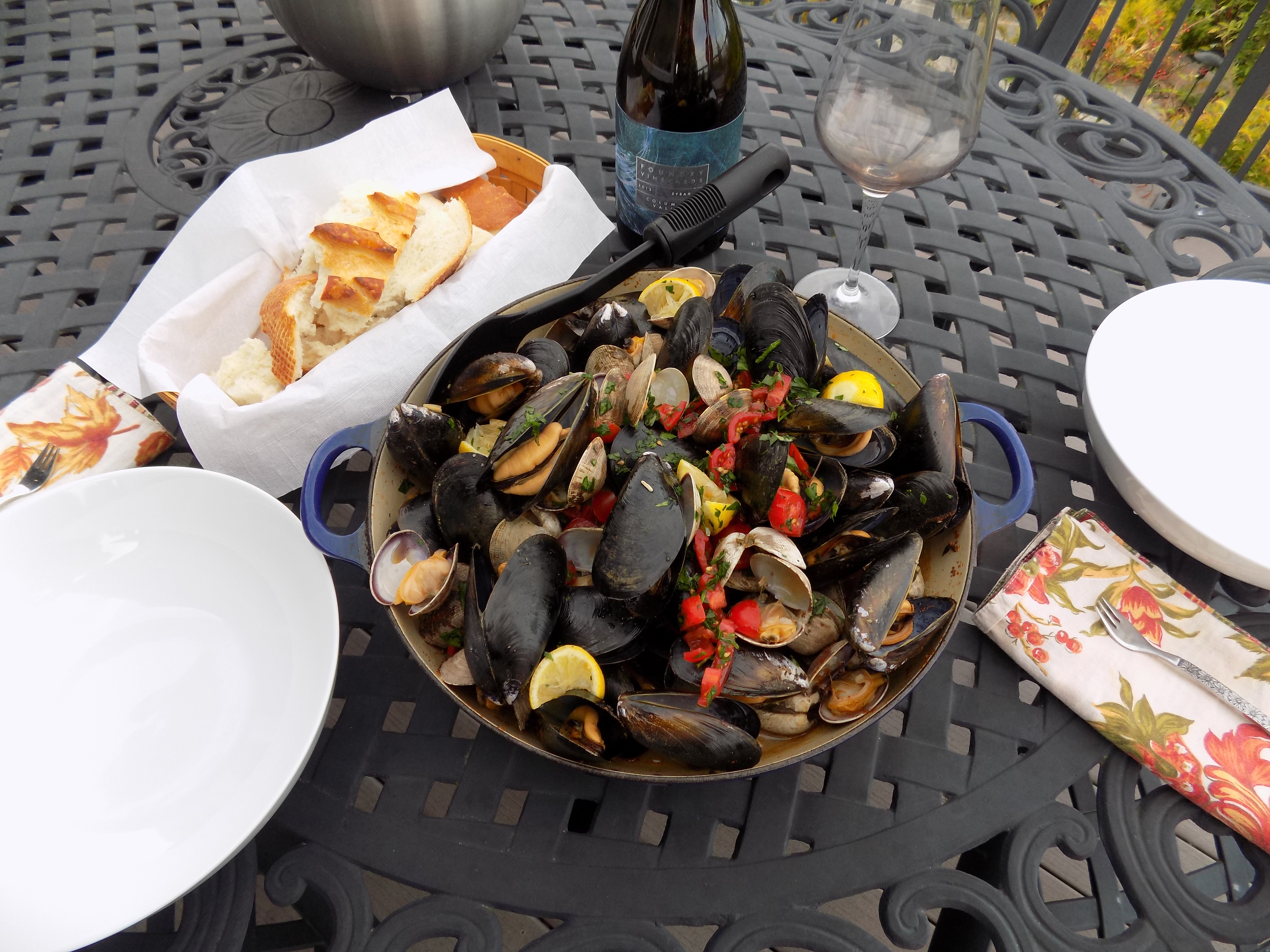I originally decided to give this recipe a try when I realized it contained so many of my favorite ingredients. I am a complete sucker for any recipe with garlic, jalapenos, white wine, cream, seafood, or avocados to begin with. But when they all are combined in the same recipe! How could I not give it a try? So before it gets too warm and you all stop thinking about soup until next fall, I thought I better post this wonderful recipe. I found it in my favorite food magazine, Cooking Light. I decided to post it now because it is one of those soups that is truly a soup for all seasons. And sometimes when it’s warm outside, we forget that soup makes a terrific dinner entrée even in the summer. Add a nice crusty bread, and that’s really all you need.
So if you would like a wonderful change of pace from seafood soups, gumbos, and bisques that are tomato based, make this delightful recipe for dinner sometime soon. And no, the 12 cloves of garlic will not make it too garlicky. Just don’t plan to kiss someone who hasn’t also enjoyed the soup with you. Just a word to the wise!
- ½ lb. large raw shrimp/prawns with shells and tails
- 1 tsp. extra virgin olive oil
- 2 c. chopped onion
- 12 garlic cloves, sliced
- 2 jalapenos, halved (veins and seeds removed)
- ¼ c. dry white wine
- 6 c. water
- 1 T. butter
- 2 T. flour
- ¾ c. heavy cream
- 1 tsp. kosher salt, divided
- 1/8 tsp. crushed saffron threads
- 1 lb. firm white fish (snapper, halibut, cod) cut in bite size pieces
- 3 T. minced cilantro
- 2 avocados, chopped
- lime wedges
Peel and de-vein the shrimp, reserving shells and tails. Place shrimp in the refrigerator. Heat a heavy pan over medium-high heat. Add olive oil, reserved shrimp shells and tails, onion, garlic, jalapeno halves; sauté 3 minutes, stirring frequently. Add wine and cook until evaporated, stirring constantly. Add water and bring to boil. Reduce heat, and simmer 40 minutes or until liquid is reduced to three cups; strain over bowl. Discard solids and wipe pan clean. Melt butter in pan and whisk in flour; cook for one minute, stirring constantly. Gradually stir in reserved three cups of shrimp broth, cream, 1/2 teaspoon salt, and saffron; bring to boil. Reduce heat and cook for 5 minutes or until slightly thickened, stirring occasionally. Sprinkle reserved shrimp and fish cubes with remaining 1/2 teaspoon salt; add to liquid. Reduce heat and simmer 3 minutes or until shrimp are pink and fish flakes easily. Remove from heat. Serve garnished with cilantro, avocado, and squeezed wedge of lime.

